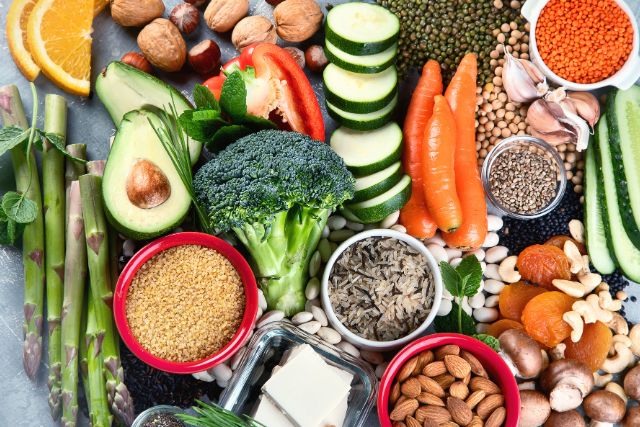Recent Posts
-

- Diabetes-Friendly Nutrition: Smart... 08.12.2024
-

- Nutrition for Chronic... 08.12.2024
-

- Anti-Inflammatory Diet: Food... 08.12.2024
-

- Low-Sodium and Heart-Healthy:... 08.12.2024
-

- Plant-Based Diets for... 08.12.2024
Rhubarb Infusions: Crafting Delicious Beverages Beyond the Pie

In the whimsical world of culinary delights, a garden superstar marches to the beat of its tangy drum – the vibrant and audacious rhubarb. With its ruby-red stalks and pucker-inducing personality, rhubarb is not just a garden dweller; it's a zesty, charismatic ingredient that adds flavor to sweet and savory creations.
Join us on a journey into the realm of rhubarb, where its tart allure meets culinary creativity, and every bite promises a symphony of tastes that will leave your taste buds dancing in delight. Buckle up for a rollercoaster ride through the bold and brilliant world of rhubarb – the sassy superstar that refuses to be confined to the pie plate!
Rhubarb is a unique and versatile plant cultivated for its edible stalks. Botanically known as Rheum rhabarbarum, it belongs to the Polygonaceae family. The most commonly used part of the rhubarb plant is the long, celery-like stalk, which can vary in color from pale green to deep red, depending on the variety. The leaves of the rhubarb plant are not edible and contain oxalic acid, which can be toxic, so only the stalks are typically consumed.
Rhubarb has a distinctively tart flavor and is often used in cooking and baking to add a tangy element to dishes. While technically a vegetable, rhubarb is often treated as a fruit in culinary applications. It's popular in desserts like pies, crisps, and compotes, where its tartness can be balanced with sugar.
In addition to its culinary uses, rhubarb has been used in traditional medicine for its potential health benefits. However, its consumption should be moderate due to oxalic acid.
Rhubarb's unique tartness and vibrant flavor make it a fantastic addition to various beverages. Here are some creative ways in which rhubarb is used in drinks:
Rhubarb Lemonade:
Freshly squeezed lemonade gets a zesty twist with the addition of rhubarb syrup. This refreshing beverage is perfect for warm days.
Rhubarb Iced Tea:
Infuse your favorite iced tea with the tangy goodness of rhubarb for a unique and flavorful twist on a classic.
Rhubarb Mojito:
Muddle rhubarb with mint, lime, and sugar, then add rum and soda water for a rhubarb-infused take on the classic mojito.
Rhubarb Spritzer:
Mix rhubarb syrup with sparkling water for a refreshing and sophisticated, non-alcoholic spritzer.
Rhubarb Bellini:
Combine rhubarb puree with sparkling wine or champagne for a delightful and elegant rhubarb bellini.
Rhubarb Smoothie:
Blend rhubarb with other fruits like strawberries or oranges for a tangy and nutritious smoothie.
Rhubarb Ginger Fizz:
Combine rhubarb syrup with ginger with club soda or ginger beer for a fizzy and spicy beverage.
Rhubarb Margarita:
Shake up your traditional margarita by incorporating rhubarb syrup for a sweet and sour kick.
Rhubarb Mint Cooler:
Combine rhubarb syrup with fresh mint leaves, lime juice, and soda water for a cooling and flavorful mocktail.
Rhubarb Sangria:
Mix rhubarb with red wine, brandy, and various fruits for a vibrant and fruity rhubarb sangria.
To incorporate rhubarb into beverages, creating a rhubarb syrup or puree is common by cooking the stalks with sugar and water. This base can be used in various drink recipes to add a burst of tartness and a beautiful pink hue. Whether in cocktails, mocktails, or non-alcoholic beverages, rhubarb brings a delightful and unexpected twist to your drink repertoire.
Disclaimer: The information provided in this article is for general information purposes only. All information in this article is sourced from other websites, and we do not represent any rights regarding the contents and information on the site. All rights belong to their original owner.





